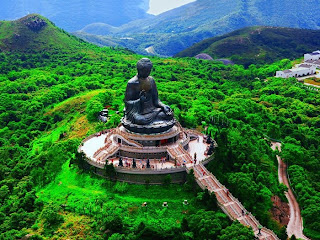The History of Buddhism spans the 6th century BCE to the present, starting with the birth of Buddha Siddhartha Gautama on the Indian subcontinent, in what is now Lumbini, Nepal. This makes it one of the oldest religions practiced today. The religion evolved as it spread from the northeastern region of the Indian subcontinent through Central, East, and Southeast Asia. At one time or another, it influenced most of the Asian continent. The history of Buddhism is also characterized by the development of numerous movements, schisms, and schools, among them the Theravāda, Mahāyāna and Vajrayāna traditions, with contrasting periods of expansion and retreat.
Siddhartha Gautama
After asceticism and meditation, Siddhartha Gautama discovered the Buddhist Middle Way—a path of moderation away from the extremes of self-indulgence and self-mortification.
Siddhartha Gautama attained enlightenment sitting under a pipal tree, now known as the Bodhi tree in Bodh Gaya, India. Gautama, from then on, was known as "The Perfectly Self-Awakened One," the Samyaksambuddha.
Buddha found patronage in the ruler of Magadha, emperor Bimbisāra. The emperor accepted Buddhism as his personal faith and allowed the establishment of many Buddhist vihāras. This eventually led to the renaming of the entire region as Bihār.
At the Deer Park near Vārāṇasī in northern India, Buddha set in motion the Wheel of Dharma by delivering his first sermon to a group of five companions with whom he had previously sought enlightenment. Together with the Buddha they formed the first Saṅgha, the company of Buddhist monks, and hence, the first formation of the Triple Gem (Buddha, Dharma and Saṅgha) was completed.
For the remaining years of his life, the Buddha is said to have traveled in the Gangetic Plain of Northeastern India and other regions.
Buddha attained parinirvāṇa in the abandoned jungles of Kuśināra.
Just before Buddha died, he reportedly told his followers that thereafter the Dharma (doctrine, teaching) would be their leader. The early arhants considered Gautama's words the primary source of Dharma and Vinaya (rules of discipline and community living), and took great pains to formulate and transmit his teachings accurately. Nonetheless, no ungarnished collection of his sayings has survived. The versions of the canon (accepted scripture) preserved in Pāli, Sanskrit, Chinese, and Tibetan are sectarian variants of a corpus that grew and crystallized during three centuries of oral transmission.



